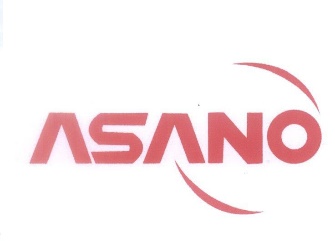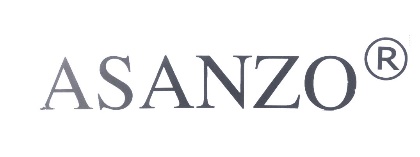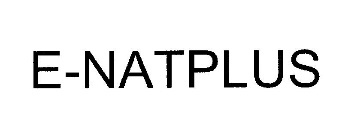Improper use of registered trademarks in Vietnam – Risks & Solutions?
Not a few trademark owners think that the most critical aspect is that their marks have been successfully registered. Therefore, making some changes to a registered mark will not have any adverse effect or risk of infringing another’s mark or resulting in the cancellation of the registered mark. The truth is that this is not the case. The three examples below illustrate the risks that trademark owners face when they use a mark that deviates from the registered trademark.
Typical trademark disputes caused by improper trademark use
(#1) ASANZO vs. ASANO
Recently, the People’s Court of Ho Chi Minh City has heard the trademark dispute between the plaintiff, Dong Phuong Trading and Manufacturing Co., Ltd and the defendant, Asanzo Vietnam Electronics Joint Stock Company. The plaintiff sued the defendant on the grounds that the defendant’s use of the sign “ASANZO, device” violated the plaintiff’s trademark “ASANO, device”. Rejecting the plaintiff’s claim of infringement, the defendant stated that the defendant’s use of the trademark “ASANZO, device” is lawful because Vietnam IPO has granted registration for the trademark “ASANZO”. The relevant trademark images are provided in the below table.

Nguyen Vu QUAN, Partner

| The plaintiff’s registered mark | The defendant’s mark | |
|
| Registered mark
| Mark in actual use |
Although the defendant’s trademark “ASANZO” was protected, the first instance court ruled that the defendant’s use of the sign “ASANZO, device” constituted an infringement of the plaintiff’s protected mark, compelling the defendant to cease the infringement, publicly apologize and rectify, and pay VND 100,000,000 in damages.
(#2) ENAT 400 vs. E-NAT Plus
In a similar case, Mega Lifescience, a Thai pharmaceutical company, requested the Inspectorate of Ministry of Science & Technology of Vietnam (IMOST) to handle trademark infringement against Hiep Thuan Thanh Pharmaceutical Co., Ltd. under administrative proceedings. Below are the relevant trademark images.
| Mega Lifescience’s registered mark | Hiep Thuan Thanh Pharmaceutical Co., Ltd.’s mark | |
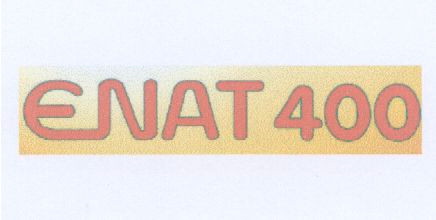 | Registered mark
| Mark in actual use
|
Taking the case into account, the IMOST determined that, while Hiep Thuan Thanh Company’s trademark “E-NATPLUS” has been protected, this company’s use of the mark “E-NAT Plus” for pharmaceutical products in Class 05 constitutes an infringement of Mega Lifescience’s trademark “ENAT 400”. Accordingly, the IMOST seized more than 700 boxes of the product “E-NAT Plus” during a raid at a pharmacy in Hapulico, which is considered Hanoi’s drug market.
(#3) Trademark cancellation due to improper use
A third party filed a non-use cancellation against a registered mark which comprises verbal and figurative element (illustrated below). In defense, the trademark owner submitted evidence of use to rebut non-use cancellation. However, after considering the facts and evidence of use of the mark, Vietnam IPO recently issued a decision canceling the validity of a Vietnamese Trademark Registration on the grounds that the trademark owner’s evidence of use does not reasonably establish that he used the mark as registered
| Registered mark of the trademark owner | Mark in actual use by the trademark owner |
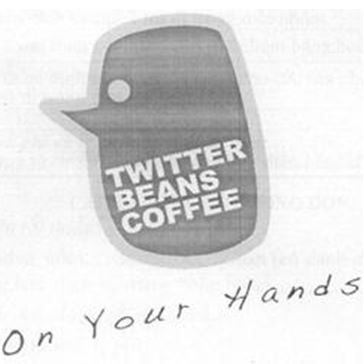 |  |
(#4) EDIVA vs EDIVA L-Cystine

Tran Toan Phat Service Trading Company Limited (“the Requesting Party“) filed a petition for cancellation of Trademark Registration Certificate No. 84525, registered for the mark EDIVA and owned by Hau Giang Pharmaceutical Joint Stock Company (“the Trademark Owner“). The petition alleged that the Trademark Owner had abandoned the EDIVA mark through non-use for a prolonged period. The Trademark Owner opposed the cancellation petition and submitted evidence purporting to show use of the mark. However, the IP Office of Vietnam (“the VNIPO”) rejected the Trademark Owner’s evidence, finding it insufficient to establish use of the mark during the relevant period.
Notwithstanding the Trademark Owner’s submission of evidence purporting to demonstrate use of the EDIVA trademark, the VNIPO issued a decision cancelling Trademark Registration Certificate No. 84525. The VNIPO’s decision was predicated on the following grounds:
- Insufficient Evidence of Use: The Trademark Owner provided unauthenticated copies of sales invoices. Further, photographic evidence of medicine boxes displayed in pharmacies lacked information regarding the date of the photographs. Consequently, the VNIPO found the evidence unreliable and insufficient to establish use of the mark within the prescribed timeframe.
- Failure to Satisfy Time Requirements: Under the Law on Intellectual Property, in this case, evidence of trademark use must predate June 28, 2017 (i.e., 03 months before the date of the cancellation petition). However, the sales invoices submitted by the Trademark Owner were all generated after this date, rendering them inadequate to demonstrate use within the statutory period.
- Non-Conforming Use: The Trademark Owner utilized the EDIVA mark in conjunction with other elements (e.g., “L-Cystine”) and in a stylized manner that deviated from the registered trademark. The VNIPO determined that this use did not constitute sufficient evidence of use of the mark as registered.
What risks due to improper use of registered trademarks?
Risk of infringing on another’s trademark
The use of a mark means the act of affixing a mark to goods or means of service in order to assist consumers in distinguishing goods/services of the same type produced/produced by different entities. Thus, the mark’s primary role must be to identify/distinguish the commercial origin of the goods/services bearing the mark. After being granted registration, the owner has the right to “affix” the mark to the goods/services registered under that mark to conduct commercial activities in Vietnam.
The defendants in all three of the preceding cases have registered their marks in Vietnam. Thus, from a legal standpoint, these defendants have the right to use their registered marks to commercialize their products in Vietnam. However, the use of the mark must be within (or fall into) the scope/extent of the trademark protection. The scope of protection of a trademark registration depends on (i) the mark image as registered and (ii) the list of goods/services identified in the trademark registration certificate. This means that the mark’s use must not exceed the scope of protection afforded to it by law; and therefore, even if the mark is registered, misuse of the mark may make the mark go beyond the scope of legal protection.
It would be wrong to think that, as long as the trademark is registered in Vietnam, you are free to use it in whatever way you want. Vietnamese law does not specifically provide that the owner must use the mark as it was registered. However, if the use of a trademark (even if registered) exceeds the extent/scope of its protection, exposing the relevant consumers to the risk of confusion, you may be exposed to many risks. It’s worth noting that, in addition to administrative sanctions (Enforcement agencies such as Market Management Bureau, Economic Police, Science and Technology Inspectors… may seize and destroy the infringing goods and impose monetary fines of up to VND 500,000,000), the rights holder also can seek compensation for material and moral damage, apology, public correction via civil route. No one wants to bet (or to risk) their company’s reputation or lose customer loyalty to a brand only due to improper trademark use.
Risk of losing trademark rights
Improper use of a trademark can put you at risk of losing your trademark rights. A third party may petition the Vietnam IPO to cancel a registered trademark if such mark has not been used by the trademark owner or by the person authorized by the trademark owner for a period of 5 consecutive years from the date of registration. Using a trademark that is dissimilar to the registered one may mean that you have not used the registered trademark. Therefore, in this state, proof of use of the mark (as distinct from a registered mark) may be rejected by the Vietnam IPO, putting your registered trademark at high risk of being cancelled for reasons of non-use.
What is a proper use of a registered trademark?
Under Decree 65/2023/ND-CP (Article 40.2), using a form insignificantly different from the registered mark (that doesn’t change distinctiveness) is deemed use – mirroring Paris Convention Article 5(C)(2). Article 5.C.2 of the Paris Convention provides for the use of the mark as follows: “Use of a trademark by the proprietor in a form differing in elements which do not alter the distinctive character of the mark in the form in which it was registered in one of the countries of the Union shall not entail invalidation of the registration and shall not diminish the protection granted to the mark”. Thus, in principle, the trademark owner can use a mark in different form, provided that such a mark does not “alter the distinctive character of the mark in the form in which it was registered”, it will not “entail invalidation of the registration and shall not diminish the protection granted to the mark”. In other words, using the mark in a manner other than that of the registered one still constitutes the use of the registered mark as long as the distinctive character of the mark is not altered. The purpose of this legislation is to enable trademark owners to modify their marks without impairing their unique character, thereby adapting the mark to the marketing and promotion of connected goods or services. However, the alteration must be in indistinguishable elements, and the sign(s) used in practice and the registered trademark must be fundamentally the same”.
Is it mandatory to use the mark exactly as registered?
This question comes from the fact that when using trademarks in commerce in Vietnam, trademark owners tend to (i) change the design/color or stylization of the registered trademark, (ii) remove an element in the registered trademark, and (iii) add some new elements to the registered trademark. Thus, does modifying the mark for actual use or employing a sign in a form different from the registered one entail the risks of infringing on another’s trademark or losing the trademark rights? Yes, but not always.
Practice indicates that in general, a trademark owner can make some changes in typeface, stylization, design, and color to a registered trademark without negatively affecting the validity or scope of protection of the mark if such changes do not alter the registered mark’s distinctive character. A trademark owner may omit or add an element to his registered mark if such added/omitted element is not distinctive, or has “weak” or unremarkable/dominant distinctiveness. In such sense, such added/omitted element does not change the distinctive character of the registered trade mark and thus, the actual use of the mark (with an element being added to or omitted) may be considered use of the registered mark or may suffice to cover the registered mark.
A company that successfully registers its trademark with Vietnam IPO does not enjoy immunity from claims of infringement from other trademark owners. Use of a trademark varied from its registration may put trademark owners at risks of infringement allegations or loss of rights afforded to the registered marks
What strategy to reduce the risk of using a trademark other than the registered trademark?
The law of Vietnam does not stipulate that the use of a sign that is similar/similar to a trademark registered by the owner himself will not infringe the trademark rights of other organizations/individuals. Therefore, this use cannot guarantee that the trademark owner is exempt from accusations of trademark infringement from other organizations/individuals. Cases ASANZO vs. ASANO and ENAT 400 vs. E-NAT Plus demonstrate the risk of trademark infringement when the owner uses a mark in a form different from the one registered. Thus, regardless of the registered trademark, using a trademark in a different version may expose the trademark owner to liability for trademark infringement by another organization/individual. A sign other than a registered trademark shall be considered as an independent sign, unrelated to the registered mark. To determine whether an infringement of another’s trademark has occurred, the Vietnamese enforcement agency only needs to determine that the following 3 conditions are satisfied: (i) Similarity/identicalness of a sign to a protected trademark; (ii) Similarity/identicalness of the goods/services bearing the sign with those bearing the mark and (iii) Permission of use of the mark and likelihood of confusion on the commercial origin of the trademarked goods and services.
From the above cases, it can be seen that the trademark owner can still use a mark in a form different from the registered one under certain conditions. To avoid risks when you make some changes to a registered trademark, there are two evaluation steps you should take:
- STEP 1: Assessing registered trademarks: It is necessary to evaluate registered trademarks by considering which factors are distinguishable and have strong/dominant visual impressions.
- STEP 2: Assessing the difference of the mark in practice and the impact of the changes: It is necessary to assess whether the factors contributing to the distinctive character of the registered mark are present and / or the modification in the mark in actual use, by directly comparing the two marks, in order to determine the degree of difference between them (major, significant or small/negligible difference).
In general, the above outlined assessments can assist you in determining whether you face a high or low risk of infringement when making changes to your registered trademark. To mitigate risk, we recommend the following approaches/strategies:
• Should use the mark as registered; • Must ensure that the distinctive characteristics of the registered mark are not altered if a mark in actual use is different from the registered one. Ideally, changes should be made only for insignificantly distinguishable elements; • Should apply to register the mark/s which its actual use is substantially different from the one previously registered; • Should consider applying to register copyright at the Copyright Office of Vietnam if the conditions for copyright protection are met; • Should conduct availability searches for the marks in actual use different from the registered one in order to similar marks (if any); • Should consider to attack validity of the similar marks found in the availability searches; • Should obtain an assessment conclusion on the likelihood of trademark infringement at the Vietnam Intellectual Property Research Institute. |
The bottom line
A company that successfully registers its trademark with Vietnam IPO does not enjoy immunity from claims of infringement from other trademark owners. Use of a trademark varied from its registration may put trademark owners at risks of infringement allegations or loss of rights afforded to the registered marks. The above cases and the current provisions of Vietnam’s IP Law cannot help determine or find a definite answer regarding when and to what extent, a change adopted to a registered mark may or may not entail risks. Obviously, when considering whether to make changes to a registered trademark, case-by-case facts must be carefully considered to make a hazard/risk assessment. It is best to seek advice from IP attorneys with extensive and practical experience and knowledge of intellectual property law who can provide appropriate solutions/strategies to assist you in legally and cost-effectively exploiting your intellectual property.


